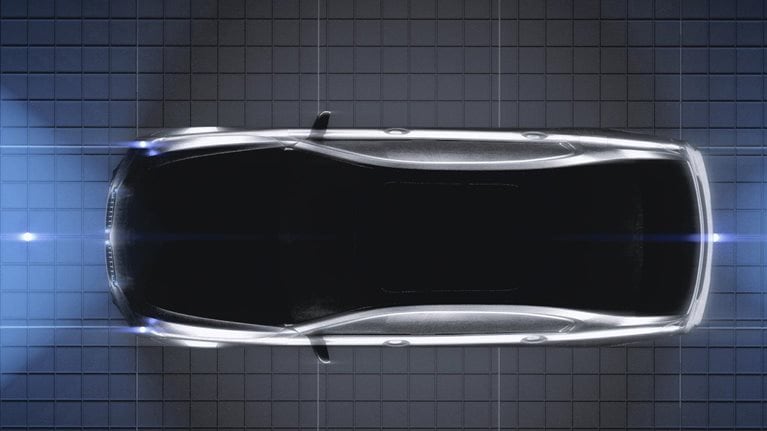When will autonomous vehicles (AVs) hit the road? What enablers will contribute to their widespread adoption? And what technologies will be critical on the road to autonomy? To answer these questions and more, we surveyed 75 executives from automotive, transportation, and software companies working on autonomous driving worldwide. Some were startups while others were incumbents, including OEMs and Tier 1 suppliers. Their responses, summarized here, tell a story of remarkable technology advances and abundant entrepreneurial energy. But they also speak to the real-world challenges of regulation, at-scale commercialization, and access to the formidable sums of capital required to realize the vision of autonomous cars, especially those with self-driving capabilities.
The first L3 traffic-jam pilots, in which autonomous systems will control driving and monitoring in some situations, have already received regulatory approval. In our survey, respondents believe that the first applications of L4 highway pilots—those involving a higher degree of automation and higher speeds than traffic-jam pilots—will be possible by 2024 or 2025 for private cars (Exhibit 1). Respondents from start-ups were more bullish about these timelines than respondents from more traditional companies.

Would you like to learn more about the McKinsey Center for Future Mobility?
Our research at McKinsey suggests that highway pilots involving the next generation of autonomous vehicles will occur in the near future, with rollout to volume or mass-market platforms coming later. These early L4 highway pilots will likely be limited to sites with premapped highways and good weather; they will exclude certain operational design domains (ODD), such as merging on highways or highway crossings.
Early robotaxi services are already available in select markets, but the path to at-scale commercialization remains challenging because of the need for technological advances, regulatory support, and available capital. The earliest at-scale applications are likely to emerge in larger markets—typically city centers—that have a higher volume of trips and generally experience good weather. Survey respondents expect these at-scale rollouts to occur in 2026 or later, with China and the United States leading the market.
Multiple truck OEMs and autonomous-system providers are conducting pilots in North America in which fully autonomous trucks drive on highways. They go from one hub that is directly connected to the highway to another. These tests include a safety driver behind the wheel. Most of these tests are being conducted in the Sun Belt states because they have favorable weather and favorable regulatory conditions. Survey respondents expect these services to be commercially available in 2026 or later. We believe that trucking is likely to be one of the earliest use cases for autonomy in the commercial segment. Use cases for closed environments, such as port/drayage trucks and yard hoppers, are also likely to be adopted early.
Some countries have recently introduced regulations about autonomous driving, with Germany issuing particularly robust guidelines. That said, many other countries lack overarching, comprehensive regulations, as do many cities.
In our survey, 60 percent of respondents viewed the need for regulatory support as the greatest bottleneck to autonomous driving; those in Europe were most likely to voice this sentiment (Exhibit 2). Notably, several European countries have launched independent efforts to create regulations, rather than coordinating with one another. Different regulations have also emerged in China at the municipal level.

Survey respondents were least likely to cite a lack of consumer demand as an impediment to the adoption of autonomous driving.
Many survey respondents expect early use cases for L4 vehicles to require between about $0.6 to $1.5 billion in investment related to technology development (Exhibit 3).These costs relate to hardware and software development, as well as validation and testing. L4 or L5 robotaxi use cases could require five times the amount of early L4/L5 use cases.

Hardware development includes sensing technologies and actuation, as well as high-performance computing. Development costs include both component and systems-level development across initial safety concept design, testing, and industrialization (design for mass-market manufacturing), as well as potential customization for specific use cases.
Costs also include those for software development related to low-level module testing and the documentation needed to satisfy required standards. Validation costs include those related to simulation tools, data collection and storage, simulations using cloud technology, and the testing of the full software system in controlled environments and in the real world—a process that will require hundreds of drivers.

Mobility’s rebound: An industry recovers, but where is it heading?
Software will be a long-term control point for autonomous driving. Our survey respondents believed that perception software and prediction/decision-making software were most important for success (Exhibit 4). When creating software, developers will face most challenges when trying to handle “edge” cases—those situations that only occur in very rare circumstances. As AV operating design domains become more complex over time—for instance, when they include driving at high speeds or in urban settings or inclement weather—software will need to cover more edge cases.

Hardware development could be a bottleneck for the introduction of AVs, mostly because of high system costs. Our survey respondents believed that light detection and ranging (lidar) is the most critical hardware component, but a good number cited performance chips and hardware accelerators, which are the main components of control units. We believe the costs for AV hardware will decline in the early 2030s and that the components will eventually become commoditized.
Few respondents stated that development tools were the most critical elements of the stack to AV use cases. That said, autonomous driving does necessitate new development tool chains that can handle large data sets and allow continuous data integration and deployment. To succeed, players may need tools that enable faster development cycles and better simulations.
The advent of autonomy promises to reset go-to-market models for private vehicles and mobility services. While OEMs must try to meet customer expectations for premium advanced-driver-assistance systems (ADAS) features, they may have difficulty making a profit because of the high development costs of testing and validation. Over-the-air (OTA) software will serve as a gating mechanism.
Our survey showed that respondents had different opinions about which monetization models will be most popular for private AVs (Exhibit 5). While established automotive OEMs mainly believe that one-time payments will be the default, software companies and start-ups believe that subscription models will be most prevalent.

Survey respondents were divided about the monetization models likely to become most prevalent with robotaxis and roboshuttles (Exhibit 6). Although subscription models were the most popular choice across regions, industry stakeholders are likely to experiment with other methods. Company type appeared to influence some respondents. For instance, those who worked at start-ups and software companies were more likely to believe that the subscription model would become most prevalent compared with respondents at established OEMs.

The automotive sector is being disrupted by the autonomous driving, connectivity, electrification, and shared mobility (ACES) trends. Together, these forces will bring mobility to a second inflection point. Autonomous driving will transform the sector because of the high investments required. It will also prompt major shifts within the technology stack and the customer experience within the vehicle. What’s more, logistics will fundamentally change. For instance, it may no longer be necessary to have drivers for long-haul transportation. Such changes could lower costs and might lead to shifts in value pools, such as the growth of e-commerce.
In this new environment, strategic partnerships and new market strategies are likely to emerge. Some of the most likely changes are shown in Exhibit 7. Players may consider changing their go-to-market and organizational models while simultaneously building new capabilities. The transition triggered by advances in autonomous-driving technology may prompt these players to seek new avenues to raise and deploy capital, including M&A. Players in adjacent segments are also likely to be affected. For example, logistics players must consider reshaping their infrastructure as autonomous vehicles become more prevalent, such as by building warehouses closer to highways to enable fully autonomous driving between these locations. The new infrastructure can complement their existing network and flows.



